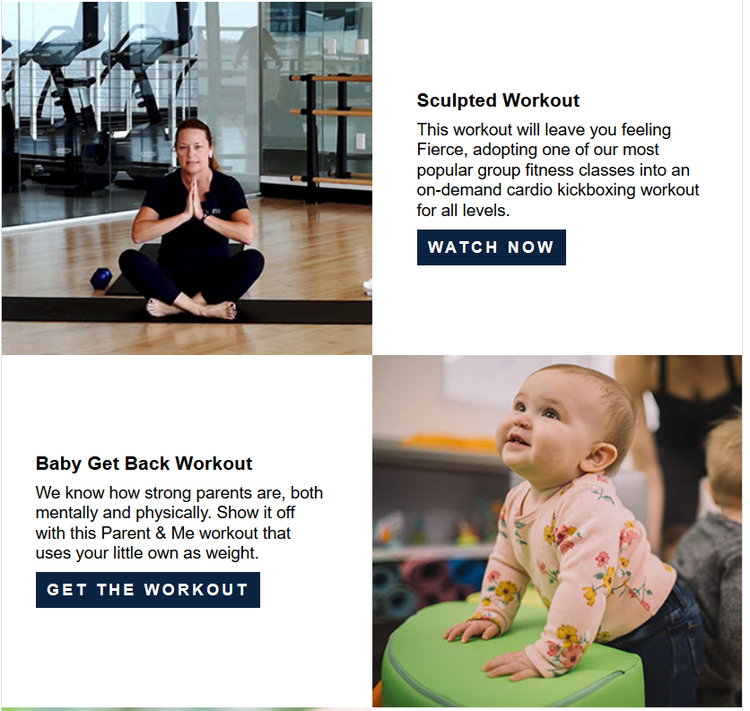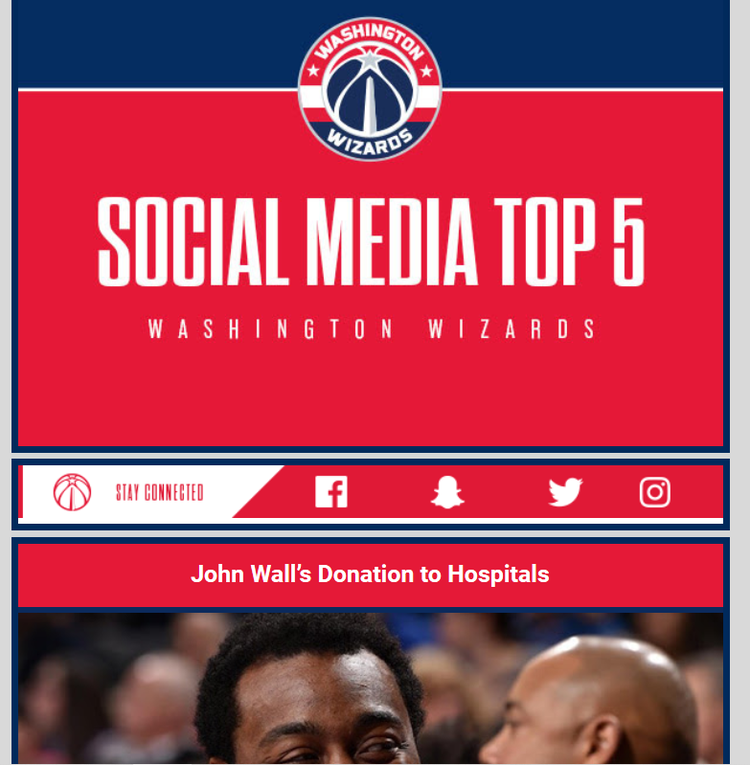When it comes to small business email marketing, you must have a newsletter. It’s cheap, it provides a direct conduit to your website, and it’s incredibly effective -- if you do it right.
But it’s a daunting challenge. Nearly 300 billion emails were sent to inboxes throughout 2019. Wait, scratch that -- that's the number of emails that were sent per day that year. That's nearly 40 emails for every man, woman, and child on the planet every single day.
Standing out in that crowd is a challenge to say the least.
It's overwhelming to any small business. How can you create a newsletter that your customers will actually read? It will take some work, but there's no reason you can't create one that will do some heavy lifting for your business and bring in leads. We’ve put together some practical newsletter ideas to get you started.
Here are our newsletter best practices for your small business:
- Put a lot of work into your subject lines
- Offer something of value
- Make it unique
- Stay on a strict schedule
- Drive readers to your site
- Keep it simple, visual, and focused
- Test, test, test
7 best practices to make a successful newsletter for your small business
The difference between a good newsletter and a bad one is vast. One sends a steady stream of quality leads to your business, the other dies in spam folders to be read by virtually no one. Follow these seven email design best practices to ensure your newsletter gains an audience.
1. Put a lot of work into your subject lines
Your subject line is the difference between a reader engaging with your brand and sending it straight to the trash without a second thought. It has to pop, so put a lot of effort into subject lines.
It’s where you sell the reader on your newsletter, and you’ve got a fraction of a second to close the sale. It needs to have immediate impact, in only a few words.
3 quick tips:
- Keep it short: Keep subject lines to 41 characters or less, since that’s the most that an iPhone will show in portrait mode. Considering the average word length in the English language is 4.8 characters, your subject line needs to be around eight words or less.
- Convey what's in the newsletter: Don't try to trick readers with vague language. Tell them what you'll offer, like "5 top summer dresses at 50% off right now." Someone in the market for a summer dress will take notice.
- Avoid over-exuberance: Nothing screams "spam" like exclamation points, all caps, or overly excited language. Tell what's in the newsletter in a simple and straightforward manner, and you'll see an increased open rate.
2. Offer something of value
Any correspondence with your customers shouldn’t be self-serving, and newsletters are no exception. Offer something of value in your newsletter, whether that's practical information or even a free product.
If you don't provide something the customer will benefit from, why would they open any future newsletters? Never forget this when you make a newsletter for your business.

D.C.-area sports and wellness complex The St. James offers helpful home-based workout content to their readers. Image source: Author
3 quick tips:
- Provide exclusive information: Can you share insider knowledge? That's a good way to get their attention with each newsletter you send.
- Give away stuff: Use your newsletter to offer your customers free products or other items of value.
- Get readers involved: Ask them for feedback on what they want. Get them to submit their own information to be featured in future newsletters. Do whatever it takes to get them active and engaged.
3. Make it unique
Want to stand out from other email newsletters that are cramming their inboxes. Ask yourself, what does your brand offer that no one else does? Then, emphasize that in your newsletter.
For example, if you offer small business IT security at an affordable price, include practical content on how small businesses can protect themselves from hackers for cheap.
3 quick tips:
- Demonstrate your value proposition: You should be highlighting what it is that you offer that’s unique and different from your competitors.
- Emphasize your brand visually: It’s more than about what you offer; it’s also your presentation. Use your brand logo and colors to make your newsletter stand out. Readers should have no doubt the newsletter is from you.
- Use analytics: Your customers will tell you what your value proposition is better than anyone, so use software in your email marketing campaign that will let you track analytics and shows what content customers connect with most. You may be surprised.
4. Stay on a strict schedule
Adhere to a consistent calendar when you send your newsletters. Sticking to a schedule makes you look more professional than sending newsletters at all times of the day or the week. It suggests you have a streamlined operation, and that you are a dependable organization.
It’s also good for email list management, because it trains your readers to expect your newsletter at a certain time, making it more likely that it will stand out in their crowded inboxes.
3 quick tips:
- It’s OK to experiment a little: In fact, it’s important to do that at first, to determine what times and days of the week receive the most engagement from your customers. But once you’ve settled on a time and day, stick to it as best you can, even if you don’t have much new content to offer.
- Prepare content well in advance: Plan and prepare content with enough time to give you wiggle room. If you scramble to put the newsletter together at the last minute, you'll probably send it out late, and your content will subpar.
- Just ask your readers: Send one survey to your email list at the outset before launching your newsletter. Ask readers when they would like to receive your newsletters, and what they would like to see in it. This has the side benefit of making them more engaged at the outset. Use this as an opportunity to solicit content from them as well, emphasizing the value their input provides.
5. Drive readers to your site
The whole point of your newsletter is ultimately to sell products, and that won’t happen if they're never visiting your site and just living in the newsletter week after week.
Find ways to guide them to the site for additional useful content or benefits. The newsletter should serve as a stepping stone to the site, and not an end in itself.
3 quick tips:
- Entice them to click through: Tease your readers with some high-value content, but make them click through to the site to get the full breakdown.
- Make sure the newsletter has a singular goal: Ask yourself what you’re trying to get your customer to do. Everything in the newsletter should guide the customer to do that. Don't distract them with other things or provide opportunities to go elsewhere, such as a link to another blog.
- Make the call to action super obvious: If you want people to click through, provide a big, bold button inviting them to do so right where you expect that they'll come to that decision. Make it the easiest thing in the world.
6. Keep it simple, visual, and focused
Your newsletter needs to have pop. Follow these three ways to do that: by making it simple, making it visual, and making it focused.
Simplicity helps the reader immediately understand what you're trying to convey, visual elements help make it interesting, and focus ensures that you aren't distracting the reader with various flotsam and jetsam.

The Washington Wizards’ email newsletter is bold, colorful, and simple. Image source: Author
3 quick tips:
- Trim the content: Make sure your newsletter isn't too wordy. Better yet, invite them to click through to your website for the full content.
- Be wise with colors: Don’t use too many colors in your newsletter design -- two or three should be enough. And make sure you include your logo and brand colors.
- Build the newsletter around a theme: Nothing focuses content like a theme. You should plot out themes well in advance and create an email design that presents it logically.
7. Test, test, test
Once you have your newsletter, don't just throw it out there. You need to understand how it’s performing and what you need to change. You will have to make some tweaks at some point.
By monitoring key performance indicators, you can see what times of day work best, what type of content is resonating the most, and what calls to action (CTA) are getting the most clicks.
3 quick tips:
- Invest in email marketing software: Don't do this on your own. Choose from many great email marketing services that will help you create professional newsletters and track detailed metrics.
- Review the data constantly: Don't just check in once per quarter. Examine how the newsletters are performing weekly and look for trends. Things can change quickly, and you need to be on top of it.
- Use A/B testing: This tried and true technique allows you to quickly spot opportunities to optimize. Essentially, you send two versions of the newsletter with key differences, such as headlines, color schemes, or layout, to random halves of your audience. That way you have an apples-to-apples comparison of their performance.
Play around with some newsletter concepts
Rather than start with a basic, boring newsletter, get experimental at the outset. Review some email marketing examples from other companies to see how they do it. Use your software to try out various newsletter templates to see which resonates best.
Experiment with some catchy newsletter titles. Be creative and have fun.
If you love your newsletter, you’ll love spending time on it, and that can only help your content and your engagement with your customers. Make sure the newsletter is a joy rather than a drag, and you’ll reap the rewards.
Our Small Business Expert
We're firm believers in the Golden Rule, which is why editorial opinions are ours alone and have not been previously reviewed, approved, or endorsed by included advertisers. The Ascent does not cover all offers on the market. Editorial content from The Ascent is separate from The Motley Fool editorial content and is created by a different analyst team.